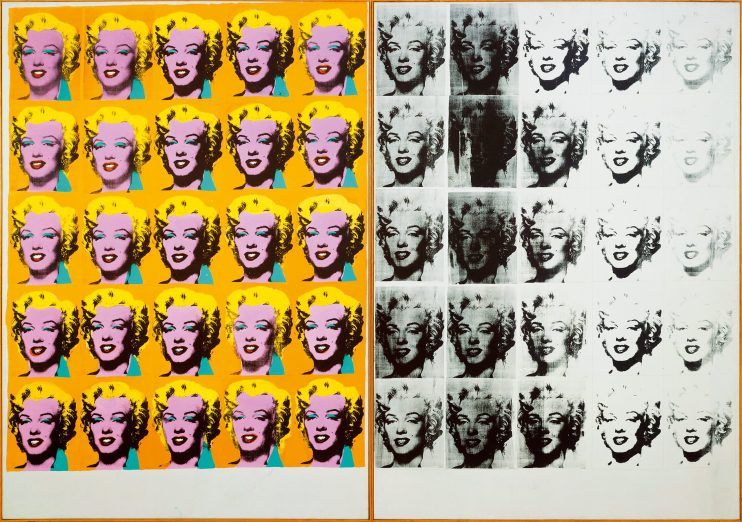Andy Warhol at Tate Modern review: A rare glimpse into the human side of this larger-than-life icon

Prior to visiting the Tate Modern this week, I was fairly sure I was over Andy Warhol.
His legacy is undeniable; the contemporary art scene, particularly the one that children of the 1980s came of age to, would be unrecognisable without him.
His body of work – more varied than he’s given credit for – is as striking and original today as it was 60 years ago.
But his embrace of commodification helped set in motion some of the more vampirish elements of today’s art scene.
His work explores the dark pull of voyeurism, the human instinct to slow down at the scene of a car crash, but can itself be unpleasantly voyeuristic and exploitative.
So while it’s hard not to admire a man who helped define the aesthetic of an era, I had little interest in him as a human being, and no great desire to spend more time in front of all those tins of Campbell’s soup, which seem to find their way into permanent collections in galleries across the world.
But the Tate Modern’s blockbuster Spring show, it’s first Warhol retrospective in 20 years, casts the artist in a more human light.
It opens with a video – one of hundreds he recorded – of the poet John Giorno, a lover of Warhol’s, sleeping. Filmed in high-contrast black and white and played back in slow-motion, it’s unexpectedly tender, the poet barely moving, creating something akin to a shadowy still life.
It’s in stark contrast to Warhol’s more famous black and white images: two semi-conscious women pinned and bleeding under the chassis of their flipped car; or his repeating images of a young woman plunging to her death from an 11th storey ledge. I could live without his entire Death and Disaster Series, to be quite honest – too flippant, too detached.
There’s another black and white picture that’s illuminating, though: Richard Avedon’s photograph of Warhol after his life-saving surgery following his shooting by radical feminist Valerie Solanas. Scars snake across his torso, his skin puckered, his chest pulled out of shape, white zig-zags from dozens of stitches forming a Frankenstein-esque patchwork.
I knew about this incident in theory. I’m pretty sure I’ve seen the photographs before. But it never registered quite how monumental this was for Warhol, how the physical injuries and psychological damage informed his work and persona for the remaining 20 years of his life.
The Warhol that lives in the mind’s eye of history – the one from the Fright Wig series (three of his wigs are displayed in vitrines like Natural History Museum specimens), the one hiding behind those giant sunglasses – existed in the shadow of chronic pain and PTSD.
It’s not all doom and gloom, however. The other thing everybody remembers are the Factory days, where the art, music and queer scenes all collided in a silver-painted apartment building, where people took lots of drugs, recorded lots of music and accidentally made history.
The Tate borrows some of the razzmatazz of the V&A for these rooms: one is covered in silver foil, another is filled with helium balloons you’re encouraged to fling in the air. The best is blacked out apart from projections of kinky S&M videos projected on the walls, a disco ball spinning as the Velvet Underground play.
And then, of course, there are the Campbell’s tins, and the Marilyns, and the Mao Zedongs, and the Debbie Harrys. It turns out I did have more capacity to enjoy them. They’re a treat, barely diminished by their ubiquity: now that really is high praise.
